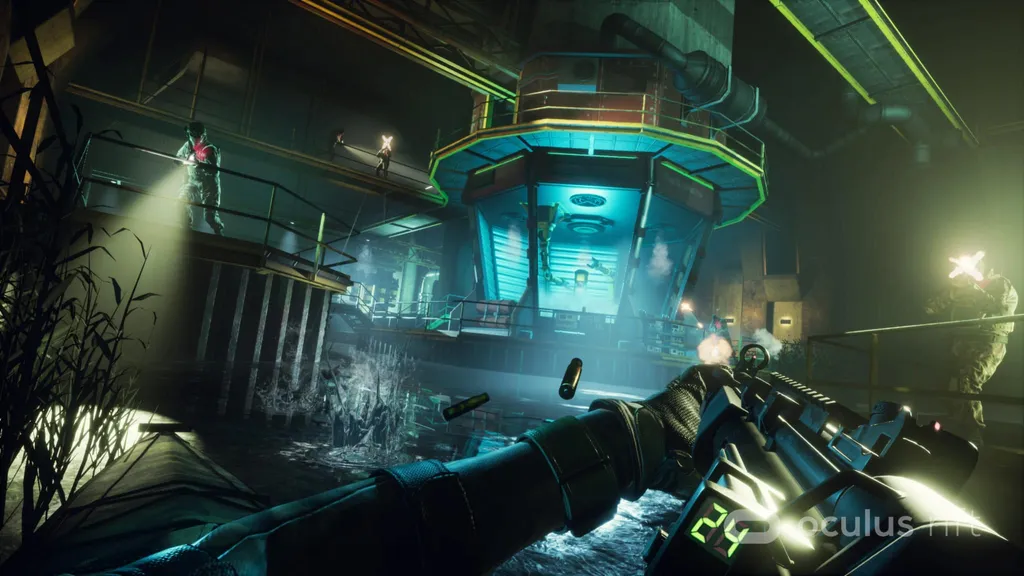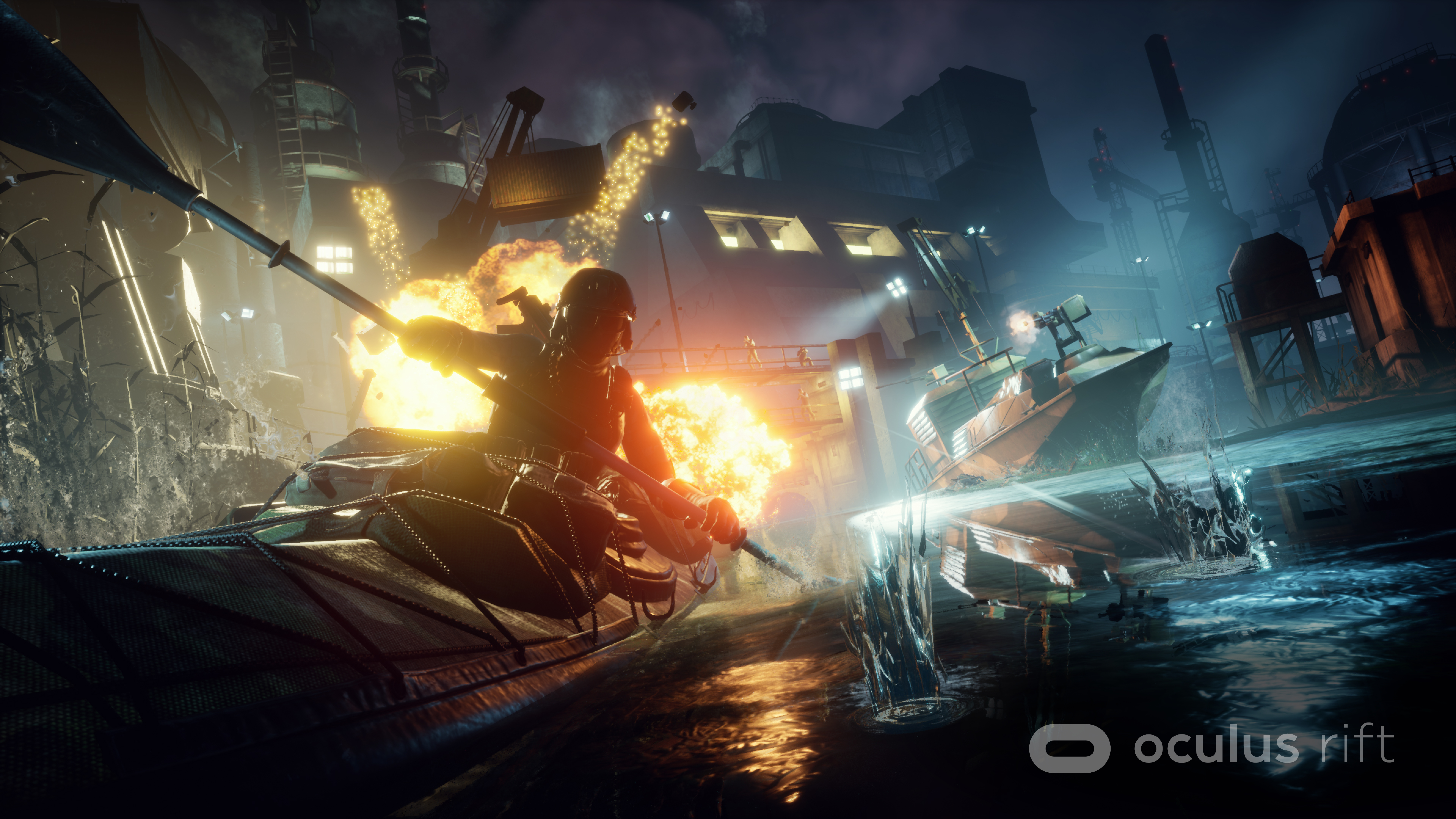I’ll confess, I wasn’t sure nDreams had it in itself.
For years, the UK-based VR developer, one of the first brave/crazy enough to dedicate itself exclusively to the platform, seemed to zig zag from near miss to significantly wider miss. The Assembly was a good-natured, story-driven adventure that felt old before its time and Shooty Fruity provided likable produce-murder entertainment for as long as that sounds like it would last. The less said about Danger Goat, the better. Nearly a decade on from its first VR experiments, it feels like the studio is yet to make the mark it wanted to a long time ago.
Consider this some cautiously optimistic speculation, then; Phantom: Covert Ops might just sail over that line and then keep on swimming (or rather, paddling).
Stealth Steps Up
Every time I play Phantom, I come away more and more convinced we haven’t just got a modestly entertaining and novel approach to VR stealth here, but a genuine contender for the genre’s best entry yet. You surely know by now that the entire game places players in a kayak, which they steer through a hostile, Cold War-era naval yard overrun by a crazed Russian separatist. You’ll silently skulk from level-to-level, sabotaging important equipment that, as luck would have it, just happens to be right by the water. It sounds ridiculous and, if you stopped to think about it for too long, you’d find enough holes in the practicality of the concept to sink an armored gunship. But that isn’t really the point.
The point is that, when you slip into the world of Phantom, there are considerably fewer barriers to immersion than you’ll find in almost any other VR game. This is something you’ll hear us drive home again and again in the run-up to the game’s June 25 launch; when we play Half-Life: Alyx, The Walking Dead: Saints & Sinners or any other well-regarded VR title, we are constantly suspending our disbelief, accepting immersion-breaking concessions with movement or interaction in order to get a ‘full’ gaming experience in VR. With Phantom, that doesn’t happen nearly as much.
Moving On
Sitting in a chair and using motion controls to paddle through reeds, taking one end of an oar to push yourself off from a wall, or grabbing a side and pulling yourself into position; all of this feels distinctly convincing in a way we don’t normally experience. It’s equal parts authentic and intuitive, offering truly human-powered movement mostly without the strange disconnect that comes from moving your virtual self while your real self stays in one place. I only say mostly as I don’t believe that contrast will ever completely vanish in any VR game for current systems, but it’s certainly diminished here. Plus constant paddling is, quite rightly, a bit of a workout.
Also there are other means of movement you might not expect the game to have considered. You can strafe by pushing your paddle away from you, for example, and you can fine-tune turns by keeping one side in the water as you drift. There is at least some degree of simulation here, even if the game occasionally makes some smart cuts in the name of accessibility, like holding a button for sharp turns.
Gone, too, are the magic over the shoulder backpacks and impossibly deep inventory systems. Every weapon, sidearm and ammo pack is given a home either on your person or the kayak itself. Your long-range rifle rests to one side but, if you’re suddenly discovered, an instinctive reach for your chest will summon a pistol to silence anyone trying to sound an alarm.
Sensible Sneaking
One of the big downfalls of immersion in a lot of VR stealth games is AI. Enemies are great at sticking to patrol routes and spotting you but, once they do, things tend to go a bit haywire. With Phantom, the barrier between you and your enemies, plus the thoughtful systems in place make this less of an issue. Enemies are scattered on island platforms and walkways, removing their ability to give chase.
On top of that, the game gives you the necessary indicators to stay hidden. A built-in interface in your kayak will let you know when you’re obscured or exposed, and the radar flashes yellow and red cones for when enemies are suspicious or aware of your presence. Little ideas like this help reduce much of the confusion.
Evolving Environments
It’s also important to highlight Phantom’s great work in environmental design. In the first level, you progress from boggy swamps with forgotten wrecks and crumbling scenery dotting the water’s edge. Slowly but surely, you make your way behind enemy lines and brutalist architecture makes itself more and more apparent. We’ll be interested to see how this element evolves to inject some variety as you explore more of the base over the course of the game.
Paddling It Home
That’s all just one side to Phantom, though. Immersion is one thing, compelling gameplay is another, but based on the few hours I’ve spent with the game’s opening levels, I remain pretty encouraged this will hold up where others haven’t. However that pans out, though, Phantom: Covert Ops has already proven itself to be one of the most immersive VR experiences we’ll see this year. Just keep your fingers crossed it’s one of the best ones, too.
Phantom: Covert Ops arrives on Oculus Quest and Rift on June 25.



























